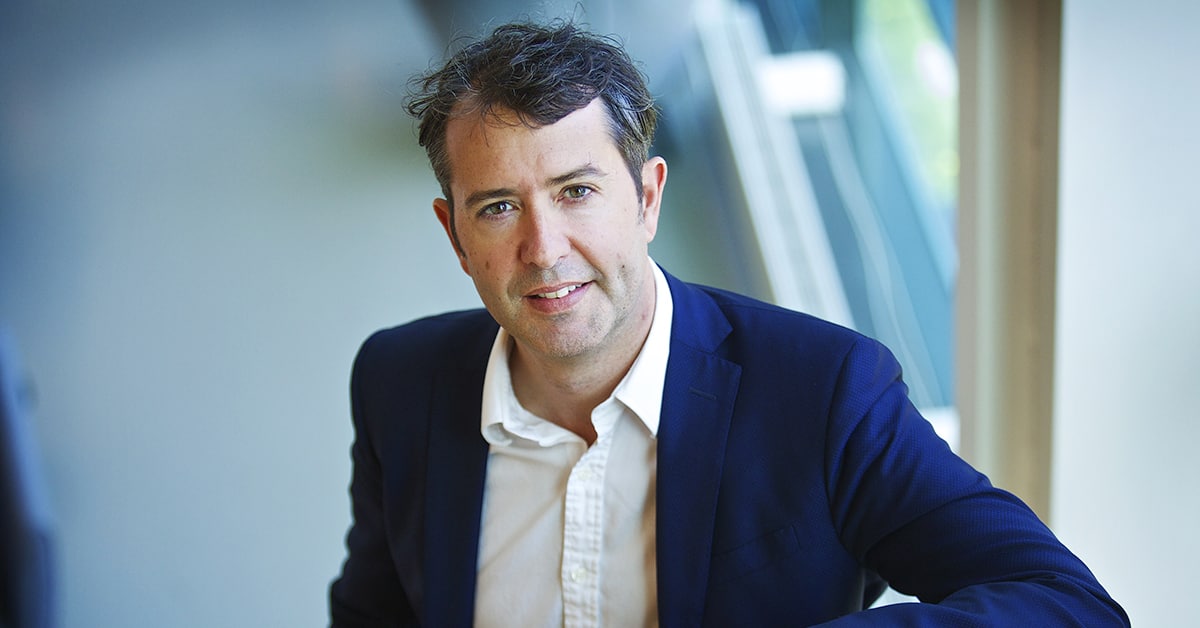A conversation with Olivier Guillaumond, global head of Innovation Labs and Fintechs at ING.

Global Finance: Which features should a successful innovation plan have?
Olivier Guillaumond: To create impactful innovation requires both muscle and a mindset. It takes time, perseverance and leadership to be innovative. It requires a structured approach, it requires consistency over time, and it requires patience and resilience to go through that. Digital innovation is a long-term commitment, so it is also paramount that senior leadership consistently supports these features.
ING is no stranger to innovation. It started digital banking with ING Direct and was probably one of the first fintechs in the world. We keep our innovative culture alive by having the right organizational structure in place, like our newly introduced ING Neo, ING Labs incubators and ING Ventures fintech investment fund—as well as using the PACE innovation methodology, in which we have trained 10,000 colleagues so far, and running boot camps, for the sixth time in 2020.
GF: Is it better to have a dedicated innovation team or work with representatives across the business lines?
Guillaumond: We firmly believe that both are essential. We have learned that it takes time to create innovations that impact customers and ING. It requires a different approach to build scale through widespread adoption, which could take five to 10 years compared with the two to three years that a positive business case may take.
Therefore, the bank set up a new business area, ING Neo, which has separate budgets and teams. ING Neo has specific ways to measure successful innovation, and its own risk functions to acknowledge that new risks emerge on the back of the disruptive products and services and that they require the appropriate control frameworks.
Our innovators’ goal is to deliver impact for ING and its clients. We believe it is essential for ING Neo to work very closely with all the businesses across all the stages of innovation: ideation, early validation, internal pilot, scaling, reselling, etc.
GF: Does your team “move fast and break things”?
Guillaumond: We work according to a couple of core principles. One is: “You either win or learn,” which signals that it is OK to experiment and fail as long as we ensure learning and don’t make the same mistake twice. We embrace the adage and use the PACE methodology when developing products. It ensures timely and critical evaluation as well as validation of problem statements and proposed solutions. Invalidating critical assumptions may lead to a radical pivot or even the end of an initiative.
GF: How have you changed your approach since starting your role?
Guillaumond: Our approach has been changing drastically since my arrival. At the start of the year, we kicked off ING Neo. ING Labs and Fintech, which I head, are part of this business area. Before, ING Labs was split between different business lines and geographies. We merged most of the lab’s support staff into a central business design and operations team, which serves all our labs globally.
GF: What are the most common pitfalls that innovative organizations should avoid?
Guillaumond: Innovation is not easy. It is not for everybody, since you will fail, sometimes over and over. You have to enable a courageous culture in which it is safe to fail to have a shot at making emerging and breakthrough value propositions scale.
Always put the client in the center: Innovation starts with a big problem to solve. So, we validate with clients very early. Is the identified problem really so big that people want to change their habits for it? Putting the client at the center of every step dramatically increases the chances of success.
Finally, we have learned that we can have the most impact if we play to our strengths as a company. And that we have to combine the bank’s strength with the strength of innovation for the best results. It doesn’t make sense for us to create other startups. There are others, which are better at it than we are. By staying close to our strengths, we ensure that we can build differentiated products, services or businesses with impact.



